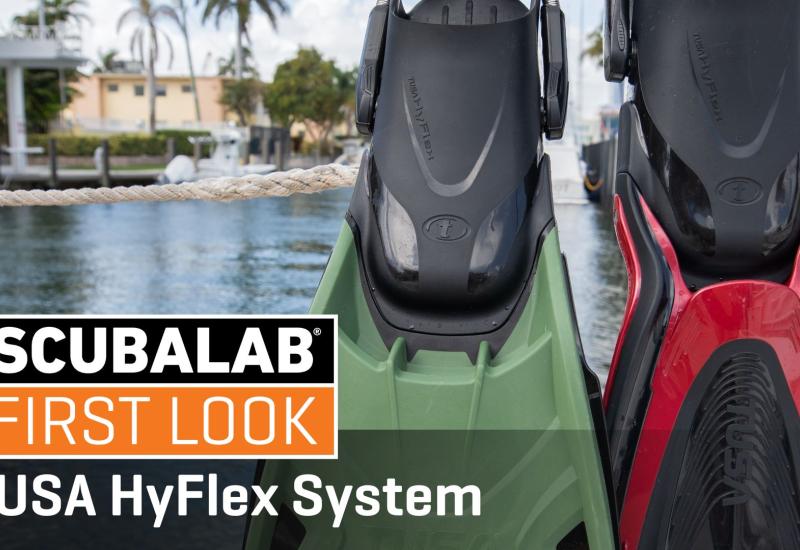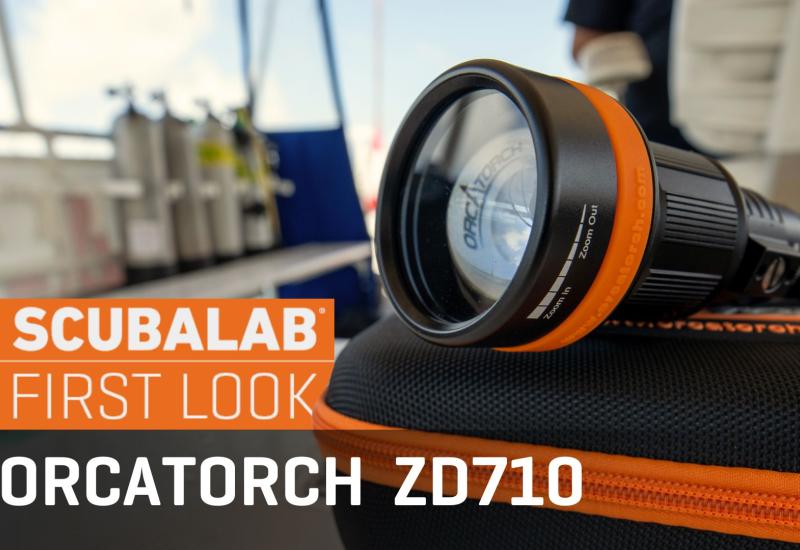Behind the Scenes Photos From ScubaLab's 2017 Regulator Test
Our team of test divers tested 20 new scuba regulators for our 2017 review. Take a look behind the scenes with these photos from the field.

John Michael BullockA Breath Of Fresh Air
ScubaLab test divers got in the water with 20 new scuba regulators.
Ergonomic testing for the 2017 regulator review was conducted at Alexander Springs in central Florida by test divers who evaluated each reg in a number of categories, assigning a score from 5 (excellent) to 1 (poor) and recording observations about the reg’s comfort and performance.

John Michael BullockBreathing Deep
Deputy Editor Mary Frances Emmons puts a regulator through its paces at Alexander Springs.
ScubaLab test diver evaluated the regulators in the following categories:
- Ease of breathing in swim position Air delivery in a standard swimming position.
- Ease of breathing in face-up position Air delivery when looking up.
- Ease of breathing in head-down position Air delivery when inverted.
- Wetness in normal swimming position How dry is the regulator in swim position?
- Wetness in face-up position How dry is it when face-up?
- Wetness in head-down position How dry is it when head-down?
- Bubble interference How well does it deflect bubbles from your view?
- Ease of clearing Clearing the reg by exhaling and using the purge.
- Purge stiffness Is the purge soft and progressive or forceful and abrupt?
- Venturi lever Is the lever easy to find and effective at blocking free-flows?
- Breathing adjustment Ergonomics and effectiveness of the control.
- Comfort of second stage Are the shape and weight such that they help prevent jaw fatigue?

John Michael BullockUnderwater Inversion
Scuba regulators were evaluated for their ease of breathing in multiple positions.
ScubaLab also conducts objective testing at Dive Lab, a commercial testing facility in Panama City Beach, Florida, on an ANSTI wet breathing simulator that measures effort — work of breathing — required to move air through a regulator as it is subjected to a precise series of depths and breathing rates. Click here to learn more about testing scuba regulators on an ANSTI machine.

John Michael BullockReg Swap
Editor-In-Chief Patricia Wuest assists test diver Kristy Santoiemmo in switching to her next regulator.
Tests are performed at an HP supply pressure of 750 psi (+/- 30 psi) in the face-forward position with breathing adjustments set at the wide-open/no free-flow point. The simulator pressurizes the test chamber to simulate depths of 132, 165 and 198 feet of seawater. Each “breath” by the machine moves 2.5 liters of air through the regulator, and we do this at breathing rates of 15, 25 and 30 breaths a minute. These precisely measured volumes of air — 2.5 liters multiplied by the breathing rate — are called Respiratory Minute Volumes (RMVs).

John Michael BullockBlowing Bubbles
Assistant Editor Robby Myers clears his regulator and tests the effectiveness of its purge.
Why do we test at these depths and breathing volumes?
37.5 RMV @ 132 fsw: This represents the maximum recreational depth at a somewhat aggressive breathing rate. 75 RMV @ 132 fsw: This simulates the potential demand at maximum recreational depth for a diver at an extremely heavy work rate, or loosely simulates two divers buddy breathing at a somewhat aggressive rate. 62.5 RMV @ 165 fsw: This represents the European conformance standard EN250. This is also a depth and breathing rate commonly used by manufacturers when determining a regulator’s performance. 62.5 RMV @ 198 fsw: This is the U.S. Navy’s Class A test depth and rate (although the Navy uses a higher HP supply pressure). The simulator measures eff ort to breathe in and out in joules per liter (j/l). As depth and breathing rate increase, the work gets harder. To maintain an accurate applesto- apples scoring comparison, testing at any depth or breathing rate is halted if breathing resistance reaches +/- 25 millibars on inhalation or exhalation (indicated in the performance graphs by “N/A”). We don’t test on the simulator for a pass/fail grade, but rather to gauge regs’ performance in these carefully controlled conditions.

John Michael BullockWhat A Good Sport
Andy Zunz, Managing Editor for Sport Diver, lends a fin during 2017 regulator test.
Some Notes On This Year's Test
Cheap Air
We usually group regulators into two categories of under and over $500. But this year’s big batch of frugal regs prompted us to use three price ranges, partly because we liked the idea of a head-to-head comparison of nine regs all priced under 400 bucks. You can’t expect a lot of frills like titanium components at that price. But as you can see in the results, both in test dives and on the simulator, those regs delivered a lot of performance for the dollar.

John Michael BullockKeeping It Brief
ScubaLab Director Roger Roy briefs test divers before they enter the water.
Shhh...
Even when a reg breathes easily and dry, excessive noise is a turnoff (although it can be amusing to read testers’ comments trying to describe a “snort,” “roar,” “honk,” etc.) Along with smooth breathing and a comfortable second stage, quiet operation was a characteristic shared by the regs that scored well for comfort in our test.

John Michael BullockA Good Day For Testing
Our initial test day was canceled due to a thunderstorm, but the makeup couldn't have been nicer.
Smooth Loops
It’s always interesting to compare a reg’s performance on the ANSTI simulator with the experience test divers report. Sometimes the hypersensitive simulator will graph behavior that test divers can’t really perceive. But when a reg has churned out smooth simulator loops over and over even at demanding breathing rates and depths, test divers report the same silky-smooth experience when they get the reg in water.

John Michael BullockRating the Regs
ScubaLab Director Roger Roy uses an underwater slate and waterproof paper to take notes during the in-water testing.

John Michael BullockThe ScubaLab Test Team
From Left: Charles Rutterbush, John Conley, Andy Zunz, Mary Frances Emmons, Tod Wildgust, Kristy Santoiemmo, Patricia Wuest, David Woods, Roger Roy, Robby Myers (Not Shown: Becca Hurley, Melissa Smith, Kaitlin Danca Galli)
Want the Results? Read the ScubaLab 2017 Scuba Regulator Review.










